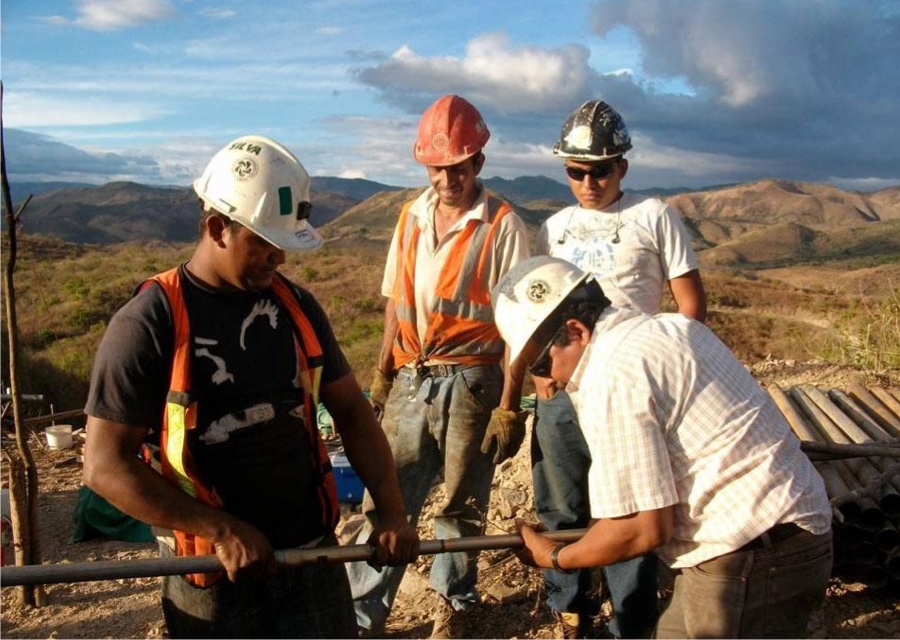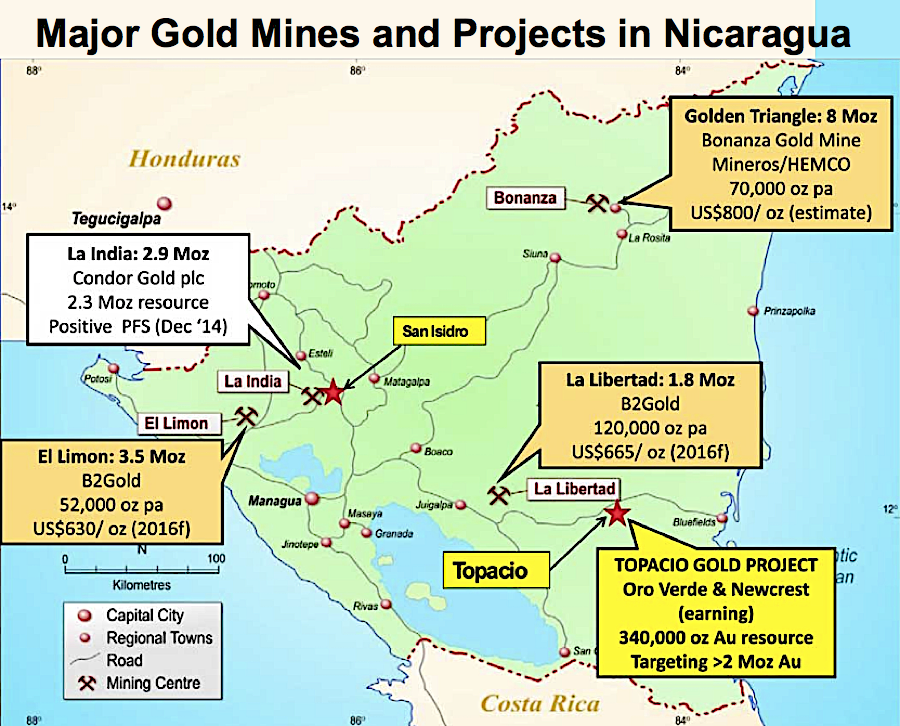Condor Gold a step closer to begin building Nicaragua mine

Shares in Condor Gold (LON:CNR) jumped Friday after the Nicaragua-focused miner submitted further technical studies to the country’s Ministry of Environmental and Natural Resources (MARENA) for permitting approval at its La India project.
The submission of additional documents comes after the environmental regulator requested a reply to formal questions following a site visit inspection to the company’s re-designed mine site in March, the company said.
Condor Gold shares climbed on the news and were trading 8.14% higher to 37.85p by 3:16 p.m. London time.
An environmental permit would allow Condor Gold to construct and operate a processing plant with capacity to process up to 2,800 tonnes per day, without the need to resettle locals.
Chairman and chief executive, Mark Child, said he remained confident the company would soon receive permitting approval for La India mine, which is expected to produce approximately 80,000 ounces gold a year from a single open pit.
An environmental permit would allow Condor Gold to construct and operate a processing plant with capacity to process up to 2,800 tonnes per day, without the need to resettle approximately 330 houses or 1,000 people.
Condor Gold initially staked concessions in Nicaragua, Central America’s largest country, in 2006. Since then, mining has significantly taken off in the country thanks to the arrival of foreign companies with the money and knowledge to tap into its reserves.
According to an independent study published last year, by exploiting just 0.3% of Nicaragua’s land area, the mining sector has been able to double gold production and increase silver output by up to seven times in the last 11 years.
Today, gold is the nation’s third largest export, Child said in an interview with MINING.com earlier this year.
The firm also has three other concessions, where exploration is actively taking place. In November, the team struck it lucky as it discovered another vein on the 313 km² concession package, covering 98% of the historic La India Gold Mining District.
Nicaragua’s gold production is supplemented by small scale artisanal mining of placer and alluvial placer gold, particularly in the regions that form what is known as the “mining triangle”: Siuna, Rosita and Bonanza, where small-scale gold extraction has been the dominant trade since 1880.
Other companies currently present in Nicaragua are Canada’s B2Gold and Australia’s Oro Verde.
Uncertain future
The fate of Condor Gold’s and other companies’ projects in Nicaragua is currently uncertain, as the country as been shaken by the largest street protests it has seen since the civil war ended in 1990. The uprising, mostly led by students, started when President Daniel Ortega tried to change the country’s social security system. He implemented a controversial pension reform resolution intended to halt the growing deficit. The changes increased contributions by workers and employers and reduced retired workers’ pensions.
In May, hundreds of thousands took to the streets of Nicaragua’s capital Managua calling on Ortega to resign. The police crackdown was immediate and many people were killed, but more protests have been registered all over the country in reaction to the government’s violent reaction.
Officially, the toll remains at 10, but rights’ groups say that number could be closer to 90. Among the fatalities, was journalist Angel Gahona who was killed while broadcasting live on Facebook. The UN Human Rights Office has called for an investigation into the deaths.
The Nicaraguan government has also been accused of arbitrarily shutting down media outlets covering the ongoing protests.

Other companies currently present in Nicaragua are Canada’s B2Gold and Australia’s Oro Verde. (Map courtesy of Oro Verde.)
More News
{{ commodity.name }}
{{ post.title }}
{{ post.date }}

Comments
StandardX
Wow,talking about missing the 800 lbs gorilla in the room. Does not MINING.com realize that there has been unrest and turmoil going on in Nicaragua since April. Does not it has the responsibility and decency to acknowledge the obvious.,